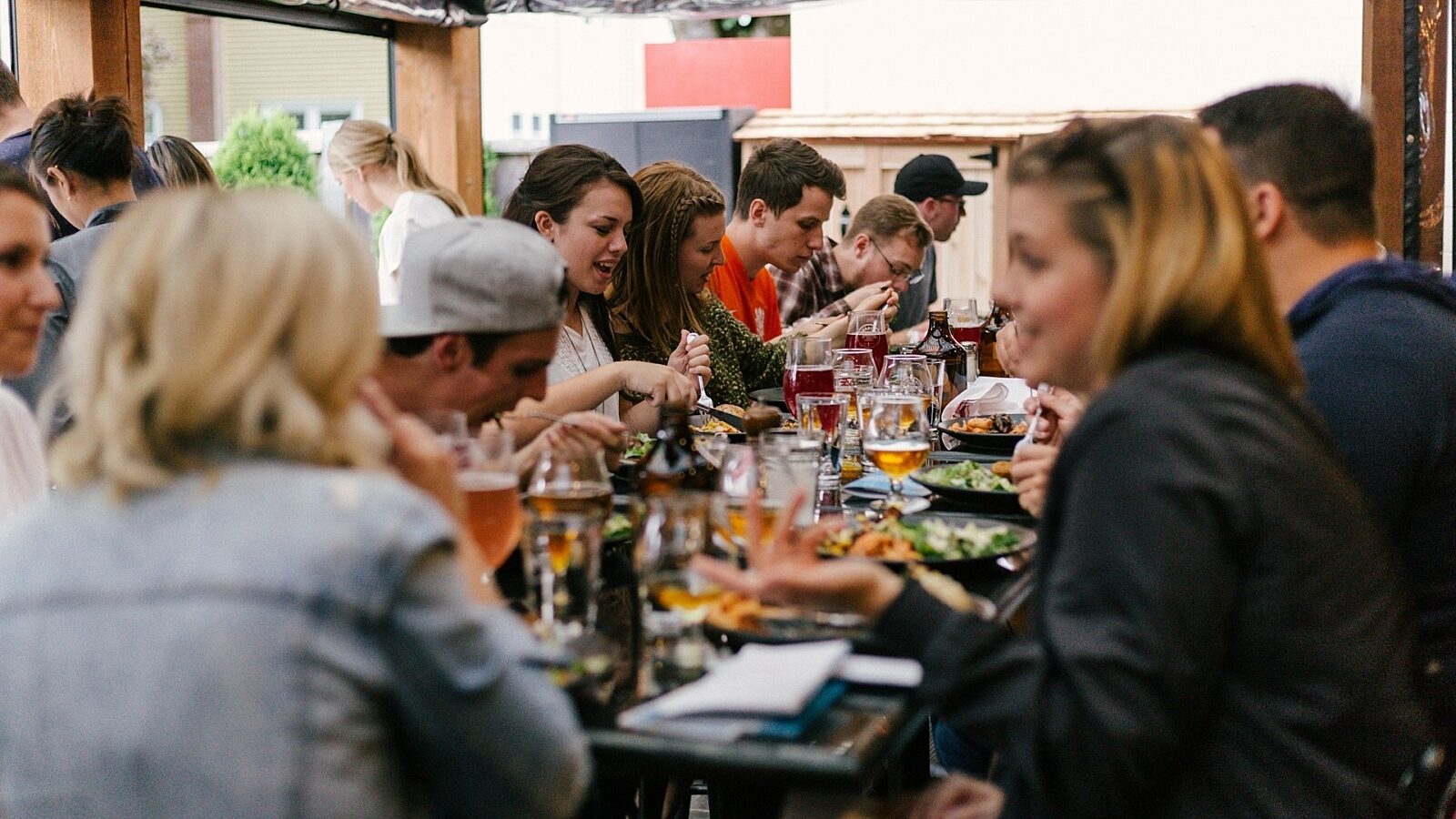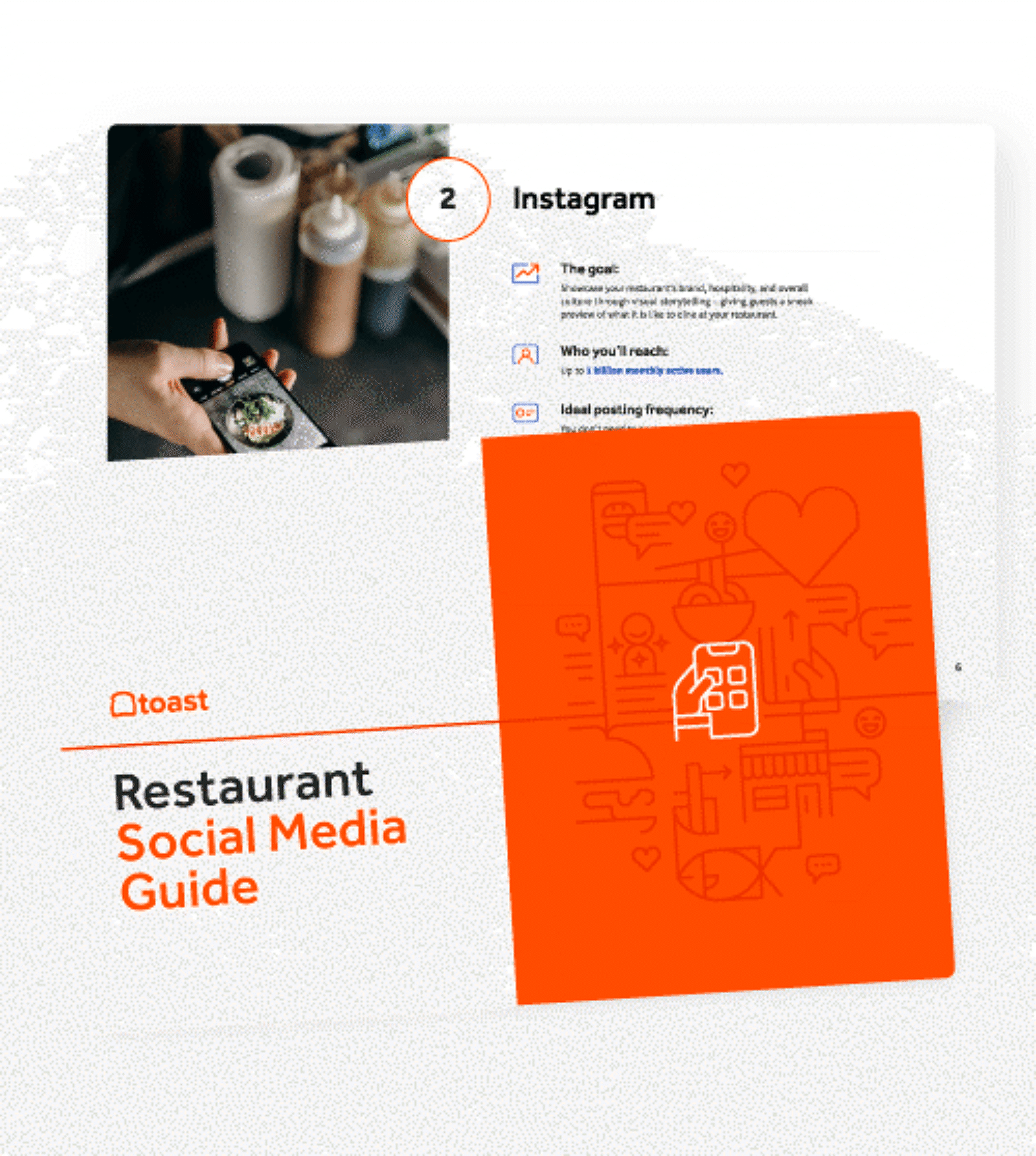
Gen Z And Millennial Restaurant Trends
Let's dive into what these younger generations really want from their restaurant experiences.

Tessa ZuluagaAuthor


Guide to Restaurant Social Media Marketing
Learn how to optimize your social media presence to showcase your brand, tell your story, attract new customers, and engage with your audience.
Get free downloadWineries, white-label apps, and witty social media posts aren't just trends. They're a glimpse into how Gen Z and Millennials are changing restaurants. These younger diners are reshaping the dining scene with their unique tastes. From farm-to-table concepts to contactless ordering, Gen Z (12-27) and Millennials (28-43) are interested in experiences that blend good food with their values and lifestyle. They're not just eating; they're sharing, reviewing, and, dare I say, influencing.
To better understand how restaurant guests feel about the current state of the restaurant industry, trends, and expectations, Toast polled 1,571 U.S.-based restaurant guests* over the age of 18 from February 14, 2024, to February 21, 2024, who have dined in, ordered takeout, or ordered delivery in the previous three months. Insights from this survey are directional and should not be interpreted as precise.
*Note: n=98 for <=27; n=383 for 28-43; and n=1090 for >=44
In this article, we'll break down:
What are Gen Z and Millennials’ dining preferences
How these young people view the economy and the future of dining
Ways restaurants can attract more Gen Z and Millennial customers
Some problems restaurants might face with these diners
Let’s get into it.
Restaurant Marketing Plan
Create a marketing plan that'll drive repeat business with this customizable marketing playbook template and interactive calendar.

Millennial and Gen Z food trends
Forget the stereotypes of plant-based milk addicts and TikTok foodie influencers. The dining preferences of Gen Z and Millennials are more nuanced and influential than you might think. Let's dive into what these younger generations really want from their restaurant experiences.
Gen-Z & Millennials preferences
Gen Z & Millennials are driven more by quality and speed of service compared to older generations. According to our survey, 26% of respondents ages 27 and below are most compelled by higher-quality menu items to eat out more often. Whereas 61% of guests ages 44+ were compelled the most by more affordable menu items. This is great news for restaurants. Younger generations are willing to pay for elite menu offerings and efficient service. By emphasizing quality ingredients, innovative menus, and a smooth dining process, restaurants can attract and retain this younger demographic. We even see this at the quick service level. According to Piper Sandler’s recent study, Chick-fil-A is Gen Z’s favorite fast food restaurant. This can mostly be attributed to Chick-fil-A’s stellar customer service, as customers reported 95% customer satisfaction with the fast food spot.
This preference for quality and speed also encourages restaurants to invest in technology, such as mobile ordering and handheld systems, which can streamline service and enhance the overall dining experience. As these generations gain more purchasing power, their dining habits can significantly influence the restaurant industry and the future of technology.
Gen Z & Millennials are open to more types of content from their favorite restaurants compared to older generations, such as spotlights on employees and media coverage. This openness reflects their desire for a deeper connection with the brands they support. Gen Zers and Millennials enjoy seeing the human side of restaurants. The data shows that 21% of diners ages 24 and below showed interest in employee stories vs. only 4% interest from guests ages 55-64. Gen Z appreciates stories about the staff who prepare and serve their meals. This preference offers restaurants a valuable opportunity to foster customer loyalty by showcasing their staff and culture, appealing to younger diners who value exceptional food and the people behind it.
They also value third-party validation through media coverage, which can influence their dining choices more than the previous generation. For restaurants, this presents an opportunity to engage with young customers beyond the dining room. By sharing diverse content across social media platforms, restaurants can build stronger relationships with these tech-savvy diners. This approach enhances brand loyalty and allows restaurants to showcase their unique culture and values, factors that seem to increasingly matter to younger consumers when choosing where to dine.
Gen-Z & Millennials are more open to new restaurant discovery. Our research responses indicate that recently, 39% of respondents said they ordered from a restaurant that is new to them, most of which were under the age of 45 years old. This presents an exciting opportunity for restaurants to expand their customer base. While repeat business remains crucial for long-term success, attracting new guests can be difficult. This new preference enables restaurants to showcase their offerings and potentially capture a new loyal following. For the food industry, this openness to discovery can drive innovation, encouraging restaurants to constantly refine their menus and experiences to attract and retain young guests.
Gen-Z & Millennials outlook on the economy and future of dining
Gen Z finds inflation slightly less challenging than Millennials and other generations. While economic pressures have prompted changes in behavior across all age groups, the responses differ significantly. Gen Z & Millennials have started saving more, while Gen X & Boomers tend to eat/cook at home more.
In fact, Compared to six months ago, Gen-Z & Millennials are more likely than Gen X & Boomers to do all of the following:
Dine/eat at a restaurant or other food establishments
Order takeaway meals from counters
Use phone apps or websites to order takeout or delivery
Make dining reservations
This suggests that while Gen Z is conscious of economic challenges, they continue to prioritize dining experiences and convenience and will take the time to book reservations.
Over 87% of Millennial and Gen Z respondents are interested in using a white-label app. According to Mighty, “a white label mobile app is a ‘native’ mobile application that runs directly on the Apple iOS or Google Android operating systems that is built by a third party but offered under your own brand.” This preference aligns with Millennial and Gen Z diners’ tech-savvy nature and desire for seamless, branded experiences. White-label apps appeal to these younger generations by offering a more personalized and integrated dining experience. These apps typically provide features such as easy ordering, loyalty programs, and exclusive offers, all within a familiar experience tailored to each restaurant's brand.
For Millennials and Gen Z, who value both convenience and brand authenticity, white-label apps represent an ideal intersection of technology and personalized service. This suggests that restaurants should consider investing in customizable app solutions to stay competitive in an increasingly digital marketplace.
Gen Z & Millennials are much more likely to be receptive to ordering from a kiosk and/or handheld devices. This acceptance reflects their comfort with technology and preference for efficient, self-directed experiences yet again. Growing up in such a digital world, these younger generations often find kiosks and handheld ordering systems intuitive and time-saving. They appreciate the ability to browse menus at their own pace, customize orders without miscommunication, and avoid waiting in lines.
For restaurants, this preference presents the chance to streamline operations and reduce labor costs while catering to the preferences of their Millennial and Gen Z consumers. Additionally, these technologies can provide valuable data on ordering patterns and preferences, allowing restaurants to refine their offerings and marketing strategies. As Generation Z and Millennials continue to shape dining trends in America, the integration of such technologies is likely to become increasingly important for restaurant businesses. I regret to inform you that, “just not being that techy” isn’t going to cut it nowadays.
How restaurants can benefit from and attract these consumers
Only 5% of guests ages 44 and above find it extremely important that their favorite restaurant supports the same social causes as them, however this is significantly higher amongst Gen Z & Millennials. In fact, the younger generations are more than twice as likely to mark this as important. Approximately 17% of guests ages 27 and below find it extremely important, 23% find it very important, and 30% find it somewhat important. This difference in attitudes reflects the evolving priorities of consumers across generations. For Gen Z and Millennials, a restaurant's social stance is becoming an increasingly important factor in their dining and food choices. Younger diners are more likely to support businesses that align with their social and ethical beliefs. This trend goes beyond just food quality and service, extending to a restaurant's impact on society and the environment.
For restaurants, this presents both a challenge and an opportunity. While they need to maintain broad appeal, there's also potential to build stronger connections with younger customers by authentically engaging with social causes. However, it's crucial for restaurants to approach this thoughtfully. Businesses should keep in mind that performative activism can backfire, especially with the younger generations who value genuine commitment to causes. Turns out you can’t always fake it ‘til you make it.
Unique concepts: breweries, gourmet markets, and wineries are the biggest attractors for the younger generation. This highlights Gen Z and Millennials' attraction to experiential dining that goes beyond traditional restaurant settings. These concepts offer a blend of unique menu items, social interaction, and educational opportunities that young people find appealing. Most wineries aren’t actually stomping on grapes nowadays?! This shows that young diners want more than just a meal — they're looking for places that combine eating, shopping, learning, or socializing all in one experience.
As mentioned earlier, despite economic challenges and inflation, younger generations are the least likely to change their dining habits. They continue to eat at restaurants and order takeout at similar rates, showing more resilience in food spending compared to older age groups. This is reflected in our research as only 27% of Gen Z and Millennial diners are dining out less compared to 54% of guests over the age of 44. When times are tough, younger generations actually have more spending power. Restaurant businesses should take advantage of this and market to them accordingly.
Gen Z & Millennials drawbacks for restaurants
The one true drawback restaurants face with Gen Z and Millennial diners is their approach to tipping. These younger generations tend to tip less frequently and are becoming more comfortable with declining tips. Only 27% of Americans surveyed between the ages of 45-54 responded that they feel more comfortable now when declining a tip, as opposed to the 42% of respondents between the ages of 25-34 who are comfortable declining a tip. 40% of respondents the same age also answered that they are declining to tip more often now. This is likely due to the fact that 48% of diners overall feel they’re being asked to leave bigger tips.
This tipping behavior may be linked to changing service expectations. Over half (53%) of all respondents feel tipping is unnecessary for pickup orders, while 41% believe minimal service doesn't warrant a tip. These attitudes suggest younger generations are more selective about when they feel tipping is appropriate, especially in non-traditional or quick-service settings.
It's giving... final thoughts on young diners
As we've seen, Gen Z and Millennial diners are influencing major changes in the restaurant industry. The youth of today are all about quality, speed, and unique concepts. They're not just here for the food — they want the whole vibe, from employee stories to social causes.
For restaurants, the message is clear: adapt to these preferences or risk losing their valuable business. By embracing technology, offering unique experiences, and providing high-quality food & service, restaurants can ensure their seats will be filled with these young diners.
One thing's for sure — the future of dining is looking anything but bland. Bon appétit!
Is this article helpful?
DISCLAIMER: This information is provided for general informational purposes only, and publication does not constitute an endorsement. Toast does not warrant the accuracy or completeness of any information, text, graphics, links, or other items contained within this content. Toast does not guarantee you will achieve any specific results if you follow any advice herein. It may be advisable for you to consult with a professional such as a lawyer, accountant, or business advisor for advice specific to your situation.
Read More
Subscribe to On the Line
Sign up to get industry intel, advice, tools, and honest takes from real people tackling their restaurants’ greatest challenges.



